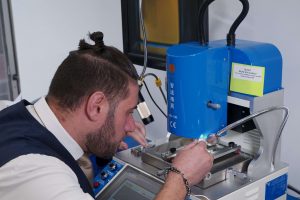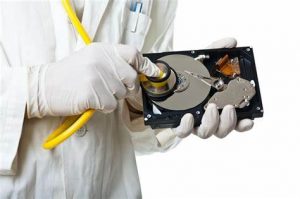AUDIO FORENSICS Secrets You Never Knew
Audio forensics is among the newest Digital Forensics Experts branches of the ancient science of evaluating crime scenes. It depends on a combination of human judgment and high-tech software. This technology assists analysts in sharpening unintelligible recording and pegging voices to individuals.
To determine if a recording is authentic, examiners use software that compares it to a recording of a known person’s voice and the recording at hand using three criteria. The typical minimum length for such a recording is seven seconds. The software analyzes a database of millions of voices using a spectrograph, a routine pitch evaluation, and a statistical analysis.

The program is then run on the two samples, and a percentage between 0 and 100 is returned to indicate the possibility that the samples are identical. In most cases, a 60% or higher score is considered sufficient to conclude that the sound on the recording is indeed that of the known person. They then have to use their discretion as they compare the recordings, using things like accent, syntax, and breathing patterns that the software didn’t catch. The following are 3 AUDIO FORENSICS Secrets You Never Knew
1. Detecting attempts to alter results
Listening to the reliable hum of the power grid is one way to verify the authenticity of the recordings. Even though power companies do their best to maintain a constant 60 Hertz hum, the frequency of that noise naturally varies in gentle, continuous waves. However, the ambient noise may suddenly shift if the tape was edited to cover up something. According to Gibson, approximately 95% of recordings contain this hum, also known as the electronic network frequency.
The European power grid’s constant electronic network frequency activity is recorded and made available to analysts through a database. This way, the time and date of a recording’s creation can be gleaned from the frequency of a hum heard in the background. There is nothing like that in the States.
Software is used to help analysts spot possible edits in a recording, but this can produce false positives. To determine whether or not a recording has been altered, they look for confirmation from multiple sources.
2. Improvements to the sound
Even if a recording has been verified as genuine and unedited, it may be of little use in court if the jury and the judge have trouble understanding what is being said. Professionals typically lower the caller’s volume while raising that of the background.
3. The Art of Lie Detection
The final step of an audio evaluation may involve using the recordings to try to spot fibs. When asked an easy question like “What is your name?” an audio engineer will note how far apart each word is and how that rhythm compares to the person’s natural rhythm, in addition to “Where do you call home?”
There is a correlation between stress and changes in speech rhythm, but this change in rhythm is not always the result of dishonesty. When someone is anxious or hasn’t eaten in a while, their natural speech rhythm may change. This audio analysis is often used in tandem with specialists’ evaluations of the speaker’s body language.
Since not all analysts adhere to the exact procedures, any audio analysis used in a trial would be subject to challenges, as is the case with all evidence presented in court. The U.S. Secret Service and FBI representatives offer peer-reviewed regulations for video and audio forensics technicians, and the Secret Service advocates for uniform standards for audio forensics laboratories.

